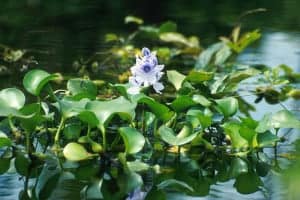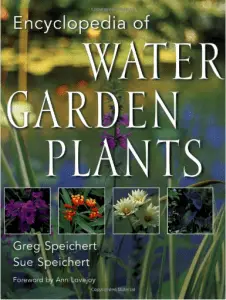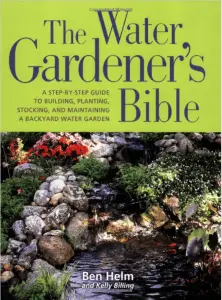what is the best plant add to a texas pond with too many goldfish
Adding found life to a koi pond helps amend pond life for koi, equally well every bit adding beauty to the pond itself.
Koi owners need to make certain they select the right aquatic plants that will harmoniously co-exist with their koi. They also need to ensure that their plant placement is done properly besides as not planting vegetation that will just be eaten by the koi!
The benefits of including aquatic plants in a koi swimming
Aquatic plants are considered an excellent addition to any koi swimming. Aquatic plants, in fact, help increase oxygen production in the water, helping to keep the pond properly aerated for koi. Their presence also helps keep the water cool by providing shade to the koi. Additionally, around the jump breeding flavour submerged plants act as a critical surface onto which female koi attach their fertilized eggs.
The presence of plants also prevents the spread of algae from getting out of command. The shade plants provide reduces incoming light into the swimming and therefore limits photosynthesis of algae. Their natural 'filtration' organization prevents blanket weeds (string algae) from forming, mainly through absorbing harmful nitrates that pb to their formation in the first identify.
Tips for introducing koi to plant life
The best way to introduce plants into a koi swimming is building a plant shelf. This shelf can be built along the edge of the pond itself. It'due south a container where water plants are suitable for planting. It's a skillful idea to weigh down the plants with large rocks or stone to form a barrier between the base of the plants and koi, preventing the risk of the koi eating the plants. Pond owners should be aware that predators like raccoons may use the shelves equally a tool for feeding on your koi. For more on how to forbid pond predation run into this article.
A vegetative filter may be an culling to introducing aquatic plants to your pond. In this organisation the plants are grown in a divide containment area that connects to the main pond. The plants here tin can serve as a natural filtration system every bit water from the chief pond travels in and out of the independent expanse. This gives you all the filtration benefits of having aquatic plants without the risk of your swimming plants beingness eaten or dislodged.
Of course, you tin can ever place aquatic plants straight into the pond itself. There are several options to choose from when deciding on which aquatic plants to put in your swimming. Pond plants tin can be divided into 3 main categories that are discussed below:
i) Floating plants
ii) Shallow-h2o marsh plants
3) Submerged plants
1) Floating Plants
This type of swimming institute can be truly gratis floating with its main vegetation on the surface while the roots hang down, unattached or there are types where the roots are attached to the muddy bottom. The benefits are that they are easy to intendance for, they provide plenty of shade for koi and they compete with algae for nutrients also as blocking calorie-free that would take otherwise helped algae to grow, all of which profoundly reduces algal growth. Additionally, they remove a lot of the existing nitrogen and phosphates in the water and thereby do a not bad job of filtering the water.
Water Hyacinth
Some popular choices for floating plants are h2o hyacinth. This species is an annual in the colder regions of North America just a perennial in the warmer parts of the States. They carry regal or blueish flowers and their roots form a compact "nest" beneath them. These plants do a great job of filtering the h2o of excess nutrients.
Pros: Grows and reproduces hands, skillful filtration of nutrients
Cons: Growth tin get out of control so be sure it doesn't notice its way to public waterways. Natively free floating so more hard to protect from nibbling koi.

H2o Lettuce
Another gratis floating plant is h2o lettuce. This is more of a tropics/warm climate plant and forms compact leaf clusters on the surface with a compact root mass forming beneath the constitute.
Pros: Forms dense meridian cover providing shade and hides fish from predators.
Cons: Can be invasive and out of control if let loose in public waterways.

Water Lilies
When information technology comes to floating plants with attached roots water lilies are definitely the nigh popular pick among koi swimming owners and may be the peak pick of any of the aquatic plants. These plants volition do well in just nearly any region of Northward America in any flavor and can be potted and placed at the lesser of the pond. On the surface, pond owners with water lilies will detect a pleasant assortment of leafy covering and beautiful flowers that will nicely emphasis any pond. Concerned nigh nibbling koi? Consider this solution. Its an underwater netting arrangement that will let you to hands protect your plants from hungry koi.
Pros: Adds beauty to your pond, will assimilate excess nutrients.
Cons: Growth can be excessive, will need to be regularly maintained in smaller ponds.

Lotus
Looking similar to water lilies the lotus is ane of the oldest cultivated aquatic plants and brand a great addition to any koi pond. Their leaves are typically very large, as much as 18 inches across which is great for providing shade to your koi in the summertime. Often confused with h2o lilies the lotus flower is very beautiful and likewise fragrant. A give-and-take of caution should be noted here as these plants take a substantial growth rate and are best planted in larger koi ponds.
Pros: Looks peachy in your pond.
Cons: Requires lots of sun and low humidity.

Water Poppy
Water poppies produce small oval leaves and yellow flowers and are a peachy choice for koi ponds. They grow fairly chop-chop in summertime and add a nice touch of yellow to your pond while filtering the water.
Pros: Good looking constitute for margins (edges) of ponds.
Cons: Susceptible to frosts.

two) Shallow Water Marsh Plants
These blazon of aquatic plants are typically planted on the edge of your koi pond in the shallows. They are ordinarily very lush and do all-time in only several inches of water.
Umbrella Plants
These tropical region aquatic plants practise well in shallow water and for those living in colder climates they demand to be brought in during winter. Umbrella plants, as the name suggests, have umbrella-shaped leaves at the cease of long stalks.
Pros: Very nice improver to pond margins
Cons: Depth limitation of6 inches or less.

Water Iris
A favorite amid koi pond owners the water iris comes in several different species. They accept long, sharp leaves and depending on the species may produce flowers in colors ranging from blueish, white or yellow. These plants are typically planted in pots that are then submerged. Most iris will exercise great both in full sun or fractional shade which is nice for those with a lot of tree cover nearby.
Pros: Aesthetically pleasing, forms good encompass for fish. Remove toxins well.
Cons: Susceptible to pests.

These pond plant references have served me well over the years. You can larn more nearly them below.


Horsetail
This plant produces a slender light-green stem and is fast growing. It is best placed on the peripheral parts of your pond and volition do keen in partial shade.
Pros: Great water filtration.
Cons: Can become out of control if not maintained.

three) Submerged Plants
Submerged plants are unremarkably grown in pots then placed at the bottom of a koi pond. Referred to as oxygenating plants this class of aquatic plants practice a great chore of removing excess nutrients from the water such equally nitrites as well as CO2 and add oxygen to the water. One word of circumspection though, these plants are often uprooted and eaten past grazing koi so care must be taken to protect them. Ane solution is the floating swimming plant protector.

Fanwort
This submerged plant is a fast growing oxygenator (much like the like Hornwort) and requires a proficient deal of light. These plants can grow upward to an inch per mean solar day and can be propagated using cuttings.
Pros: Practiced attachment plant for koi eggs during convenance, good oxygenator.
Cons: Won't exercise well in shade, needs plenty of sun.

American Waterweed (Elodea)
These plants exercise well with pond substrates that are silty. They are completely submerged with the exception of small-scale white flowers that flower at the surface. Information technology is bully at utilizing the dissolved CO2 in the water and providing embrace for fish, specially small koi. Sometimes the leafy stalks volition pause off and float abroad to have root in some other part of the pond. They do very well in milder climates.
Pros: Proficient place for koi eggs to adhere, volition stay light-green yr round (through wintertime), will assimilate backlog nutrients.
Cons: Can get really out of control and should not be immune in public waterways.

H2o Purslane (Ludwigia)
There are many species in the Ludwigia family unit but Red Ludwigia is a good pick for your swimming as this plant grows fast and is a great oxygenator. It tin can be planted every bit a submerged add-on to your swimming or you can let it float. They produce small flowers and their leaves are a reddish or purple color. They typically do well in a lot of straight light.
Pros: Many species exist so at that place volition be one for your region. Mostly hardy.
Cons: Border planted forms volition produce fine seeds that can blow onto and germinate in moisture lawns. Submerged forms demand plenty of light for ideal growth.


Source: https://koi-care.com/importance-aquatic-plants-koi-pond-choose/
0 Response to "what is the best plant add to a texas pond with too many goldfish"
Enregistrer un commentaire